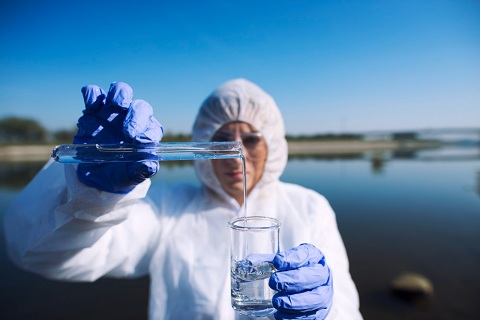Water, the elixir of life, is an indispensable resource for human survival. With the increasing challenges posed by pollution and growing water demands, traditional water purification methods are no longer sufficient to ensure the availability of clean and safe drinking water. This article aims to unravel the science behind advanced water purification technologies, exploring their effectiveness, environmental impact, and the future landscape of water treatment.
In a world grappling with environmental issues, ensuring access to clean water has become a pressing concern. As we delve into the intricate world of water purification, it’s crucial to understand the evolution from conventional to advanced technologies. These advancements not only promise cleaner water but also offer sustainable solutions for the future.
Traditional Water Purification Methods
Before we explore the cutting-edge, let’s glance back at traditional purification methods. While methods like sedimentation and chlorination have served us well, they come with their limitations, including inefficiency in removing certain contaminants and the extensive use of chemicals.
Emergence of Advanced Water Purification
The need for more efficient and sustainable water treatment options has driven the emergence of advanced technologies. Factors such as population growth, industrialization, and environmental degradation have fueled the quest for innovative purification solutions.
Reverse Osmosis (RO) Technology
One of the cornerstones of advanced water purification is Reverse Osmosis (RO). This technology employs a semi-permeable membrane to remove impurities, ensuring a high-quality output. While RO is effective, its energy-intensive nature and wastewater generation pose challenges.
Ultraviolet (UV) Water Purification
In the realm of advanced technologies, Ultraviolet (UV) purification stands out. UV light disrupts the DNA of microorganisms, rendering them harmless. This method is chemical-free and effective against a wide range of contaminants.
Ozone Water Treatment
Ozone water treatment is gaining prominence for its ability to eliminate bacteria, viruses, and other pollutants. As an environmentally friendly alternative, ozone leaves no residual chemicals, addressing concerns associated with traditional methods.
Nanotechnology in Water Purification
Nanotechnology introduces a microscopic dimension to water treatment. By leveraging nanoparticles, this approach enhances filtration efficiency and removes even the smallest impurities. However, potential environmental impacts and ethical considerations require careful examination.
Smart Water Purification Systems
The integration of technology and artificial intelligence has given rise to smart water purification systems. These systems enable real-time monitoring, predictive maintenance, and data-driven decision-making, enhancing overall efficiency.
Environmental Impact of Advanced Water Purification
In the pursuit of clean and safe water, understanding the environmental impact of water purification technologies is paramount. As societies gravitate toward advanced purification methods, it’s crucial to evaluate their ecological footprint compared to traditional approaches.
Traditional vs. Advanced: A Green Perspective
- Legacy of Traditional Methods
Traditional water purification methods often rely on chemical treatments, such as chlorination, and physical processes like sedimentation. These methods have been effective but can contribute to environmental concerns. Chemical residues and the energy-intensive nature of some processes raise questions about sustainability.
- The Eco-Friendly Evolution
Advanced water purification technologies prioritize eco-friendliness. Processes like ultraviolet (UV) purification, ozone treatment, and nanotechnology strive to minimize the use of chemicals and energy consumption. This evolution aims to reduce the environmental impact associated with water treatment.
The Footprint of Reverse Osmosis (RO)
- RO’s Energy Intensity
Reverse Osmosis (RO), while effective in removing contaminants, is energy-intensive. The process requires significant electricity to push water through the semi-permeable membrane. Understanding and mitigating the environmental consequences of this energy consumption are critical for sustainable implementation.
- Addressing Wastewater Concerns
RO systems generate wastewater as a byproduct. Proper disposal and treatment of this wastewater are essential to prevent negative environmental repercussions. Innovations in wastewater management, such as reuse or conversion to energy, can alleviate the environmental burden.
Challenges and Future Developments
While advanced water purification technologies offer promise, challenges persist. Issues such as high initial costs, public skepticism, and the need for skilled personnel must be addressed. Anticipated developments, including more cost-effective solutions and enhanced public awareness, pave the way for a brighter future.
Cost Considerations
Analyzing the costs associated with advanced purification methods is essential for widespread adoption. While initial expenses may be higher, the long-term economic viability, reduced environmental impact, and improved health outcomes make the investment worthwhile.
Public Perception and Acceptance
Addressing public concerns and misconceptions is vital for the success of advanced water purification technologies. Transparent communication, education, and showcasing success stories can help build trust and acceptance among the public.
Regulatory Framework
An effective regulatory framework is crucial for guiding the implementation and ensuring the safety of advanced purification technologies. Governments and regulatory bodies play a pivotal role in setting standards, monitoring compliance, and promoting sustainable practices.
FAQs About Advanced Water Purification Technologies
While the initial setup costs might be higher than traditional methods, the long-term benefits, including improved water quality and reduced health risks, far outweigh the costs.
While some methods like UV-C treatment are chemical-free, others might use chemicals in the treatment process. However, the quantities used are minimal and well-regulated.
Advanced purification technologies are scalable, which means they can be employed in both large-scale water treatment plants and individual households, providing clean water for all.
By efficiently removing contaminants and reducing the need for excessive chemical usage, these technologies promote responsible water management and conservation.
Conclusion
The science behind advanced water purification technologies unveils a realm of possibilities for a sustainable future. From RO and UV to nanotechnology and smart systems, these innovations offer efficient, eco-friendly, and cost-effective solutions. As we navigate challenges and embrace developments, it’s clear that the journey toward clean and safe water is a collective responsibility.



